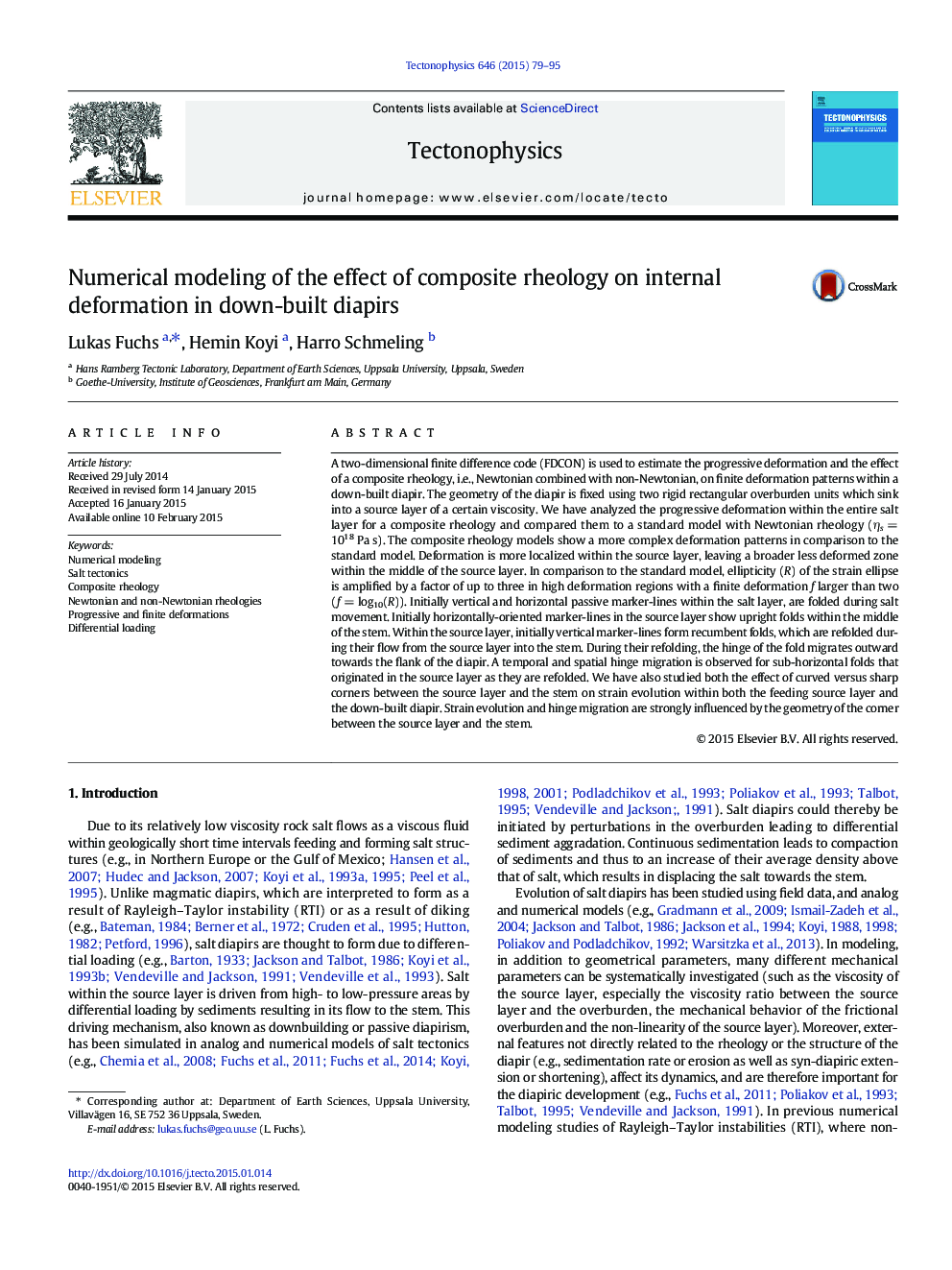| کد مقاله | کد نشریه | سال انتشار | مقاله انگلیسی | نسخه تمام متن |
|---|---|---|---|---|
| 4691720 | 1636747 | 2015 | 17 صفحه PDF | دانلود رایگان |
• The effect of composite rheology on deformation patterns in down-built diapirs
• Amplification of the ellipticity by a factor of up to 3 due to composite rheology
• Overburden geometry affects strongly the deformation pattern in the salt layer.
• Nature of folding in the salt layer from passive marker-lines
A two-dimensional finite difference code (FDCON) is used to estimate the progressive deformation and the effect of a composite rheology, i.e., Newtonian combined with non-Newtonian, on finite deformation patterns within a down-built diapir. The geometry of the diapir is fixed using two rigid rectangular overburden units which sink into a source layer of a certain viscosity. We have analyzed the progressive deformation within the entire salt layer for a composite rheology and compared them to a standard model with Newtonian rheology (ηs = 1018 Pa s). The composite rheology models show a more complex deformation patterns in comparison to the standard model. Deformation is more localized within the source layer, leaving a broader less deformed zone within the middle of the source layer. In comparison to the standard model, ellipticity (R) of the strain ellipse is amplified by a factor of up to three in high deformation regions with a finite deformation f larger than two (f = log10(R)). Initially vertical and horizontal passive marker-lines within the salt layer, are folded during salt movement. Initially horizontally-oriented marker-lines in the source layer show upright folds within the middle of the stem. Within the source layer, initially vertical marker-lines form recumbent folds, which are refolded during their flow from the source layer into the stem. During their refolding, the hinge of the fold migrates outward towards the flank of the diapir. A temporal and spatial hinge migration is observed for sub-horizontal folds that originated in the source layer as they are refolded. We have also studied both the effect of curved versus sharp corners between the source layer and the stem on strain evolution within both the feeding source layer and the down-built diapir. Strain evolution and hinge migration are strongly influenced by the geometry of the corner between the source layer and the stem.
Journal: Tectonophysics - Volume 646, 4 April 2015, Pages 79–95
